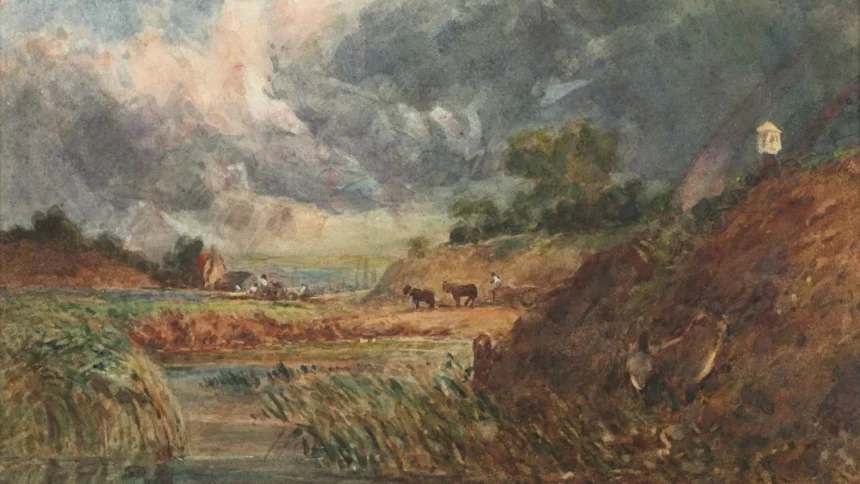Art has been an integral part of human civilization, serving as a mirror to societal values, beliefs, and traditions. The role of art transcends aesthetics; it embodies a profound connection to our shared past, influences identity formation, and bridges gaps across cultural divides. In the context of cultural identity, art holds a dual role as a preserver of traditional art forms and a medium for artistic expression. This article explores how art, in all its manifestations—visual arts, performing arts, and more—plays a pivotal role in defining and sustaining cultural heritage.
Art as a Reflection of Cultural Identity
Cultural identity is deeply intertwined with art. From cave paintings of prehistoric times to the intricate motifs in folk art, every piece tells a story of the people and the time it was created. By examining the art of a community, one can uncover layers of their beliefs, values, and aspirations.
Take, for example, traditional art forms like Aboriginal dot painting or Native American beadwork. These practices are not merely decorative but are imbued with spiritual and cultural significance. Similarly, performing arts like Kabuki theater in Japan or Flamenco in Spain reflect centuries of cultural evolution and storytelling. Such artistic endeavors serve as both a repository and a showcase of cultural heritage.
Storytelling Through Art
Art serves as a powerful medium for storytelling, a cornerstone of social traditions. In many cultures, oral narratives are complemented by visual and performing arts. Storytelling through art allows communities to pass down values, histories, and lessons to future generations.
For instance, ancient Egyptian murals depict not only their deities and rituals but also their daily lives, offering a glimpse into their civilization. Similarly, indigenous communities worldwide use art to narrate myths, cosmologies, and historical events. Whether through paintings, dances, or music, these narratives solidify a community’s cultural identity and ensure its continuity.
The Role of Art in Preserving Cultural Heritage
In the face of rapid globalization, preserving cultural heritage has become a pressing concern. Art serves as a custodian, safeguarding traditions that might otherwise be lost. Museums, galleries, and cultural institutions play a critical role in this endeavor, curating and showcasing works that reflect a society’s artistic legacy.
Heritage preservation often relies on the revival and promotion of traditional art forms. Festivals celebrating folk art and crafts, for example, are organized worldwide to keep these traditions alive. Such efforts not only honor the past but also foster a sense of pride and belonging among communities.
Moreover, art can act as a counterbalance to the homogenizing effects of globalization and art. By promoting ethnic diversity and artistic diversity, societies can celebrate their uniqueness while engaging in a global dialogue.
Artistic Expression as an Evolving Identity
While art preserves tradition, it also evolves, reflecting contemporary issues and ideas. Artistic expression today is a dynamic interplay between the past and the present. Modern artists often draw inspiration from their cultural roots, blending them with global influences to create contemporary art.
For instance, Frida Kahlo’s works fuse Mexican folklore with personal experiences, illustrating how visual arts can serve as a medium for identity and self-expression. Similarly, hip-hop culture, which originated as an expression of urban African American communities, has evolved into a global phenomenon, incorporating cross-cultural influences.
This evolution highlights the adaptability of cultural identity. While the core remains rooted in tradition, the expression of identity can shift, absorbing elements of modernity and multiculturalism.
Art as a Bridge Across Cultures
In a world marked by division, art serves as a unifying force. By showcasing the commonalities and differences in art and culture, it fosters empathy and understanding. Collaborative projects between artists from diverse backgrounds often result in creations that celebrate artistic diversity and encourage dialogue.
For example, international art festivals like the Venice Biennale or Documenta bring together artists from around the globe, highlighting the interconnectedness of creative expression. These platforms celebrate both individuality and shared humanity, emphasizing that art transcends borders and builds bridges.
The Socio-Political Role of Art
Beyond aesthetics, art often acts as a catalyst for social and political change. From the suffragette movement’s banners to the murals of Diego Rivera, artistic expression has been a powerful tool for advocacy and activism. Such works challenge societal norms, amplify marginalized voices, and redefine cultural identity.
In recent times, movements like Black Lives Matter have used visual arts and performances to draw attention to issues of racial inequality and injustice. These efforts demonstrate how art continues to be a vital force in shaping cultural narratives and driving progress.
Challenges in Preserving Cultural Identity Through Art
Despite its significance, the role of art in cultural heritage faces numerous challenges. The loss of traditional knowledge, commercialization, and cultural appropriation threaten the authenticity of artistic traditions. Additionally, funding cuts to arts programs can hinder the promotion and preservation of traditional art.
Efforts to address these challenges include promoting education in the arts, supporting local artisans, and encouraging sustainable practices in heritage preservation. Governments, NGOs, and individuals must collaborate to ensure that art remains a vibrant and integral part of cultural life.
Conclusion
The role of art in shaping and preserving cultural identity cannot be overstated. It is a repository of history, a medium for expression, and a bridge across divides. By celebrating both traditional art and contemporary art, societies can honor their past while embracing the future.
As globalization continues to blur boundaries, art serves as a reminder of our unique cultural heritage. It is through artistic expression that we connect with our roots, share our stories, and build a more inclusive world.







